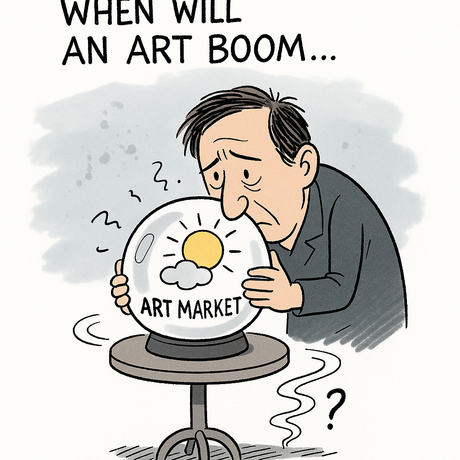The prestigious Oscar Ghez collection, unseen in France for over 25 years, has returned to its Mediterranean roots with a major exhibition at the Hôtel Caumont in Aix-en-Provence, running until March 22, 2026. The exhibition presents 54 masterpieces that showcase the visionary collecting approach of Oscar Ghez, offering visitors what organizers describe as "a journey through art history" that captures the passion and foresight of this remarkable collector.
Emmanuelle Lussiez, exhibition director at Culturespaces, and Marjorie Klein, curator of the Petit Palais collection in Geneva that normally houses these works, recently revealed the fascinating story behind this homecoming exhibition. Oscar Ghez was an industrialist of Tunisian Jewish origin who grew up and studied in Marseille before making his fortune in the rubber industry in Italy. However, his life was marked by displacement – he fled Italy with the rise of fascism in the 1930s, then left France for the United States as Nazism spread, before eventually returning to France.
After a series of personal tragedies in the 1950s, Ghez sold his factory and devoted himself entirely to art. In 1968, he opened his museum in Geneva, transforming a private mansion into a modern exhibition space where he spent his days until his death. Following the museum's closure for renovation in 2000, the collection has remained active under the stewardship of his son Claude Ghez, who ensures the works travel for worthy projects. The collaboration with Culturespaces and curator Marina Ferretti, who brings an external perspective with her own aesthetic sensibility, represents what Klein calls "a beautiful way to extend Oscar Ghez's spirit."
The choice of Aix-en-Provence as the venue holds special significance beyond mere geography. Since the Ghez family had settled in Marseille in the 1930s, Klein notes there's "something like a return to the sources." Many of the artists Ghez collected, including Charles Camoin, Frédéric Bazille, and Auguste Chabaud, also lived and worked in the Provence region, creating a natural connection between collector and location.
This exhibition marks the collection's first French showing since the early 2000s, when it was displayed at the Jacquemart-André Museum in Paris. However, the current presentation is entirely different, featuring about thirty previously unseen works, including a complete focus on decorative painting. The exhibition particularly highlights the significant presence of female artists in Ghez's collection, a remarkably progressive choice for his era.
Klein emphasizes that Ghez's support for women artists was genuinely ahead of its time. From the late 1950s, he acquired works by Suzanne Valadon, Marie Bracquemond, and Marevna – not because they were women, but because their painting genuinely interested him. At a time when these artists were largely dismissed by the art establishment, Ghez had the intuition that their value would eventually be recognized, a prediction that has proven remarkably prescient.
Among the exhibition's crown jewels is Gustave Caillebotte's "The Europe Bridge," alongside Théophile-Alexandre Steinlen's monumental 1905 work "The Apotheosis of Cats," Édouard Vuillard's "The Great Teddy" from 1918, and a magnificent 1942 Picasso piece titled "The Aubade." Visitors can also admire Valadon's powerful nudes and Félix Vallotton's striking "Nude Lying on Red Carpet" from 1909.
The organizers have deliberately paired these well-known masterpieces with rarer works by artists less familiar to the general public, including Achille Laugé, Marevna, Théo van Rysselberghe, and Nathalie Kraemer. Klein identifies Kraemer as one of her most meaningful discoveries – a Jewish artist who died in deportation at Auschwitz in 1943 and remained largely unknown for decades. "Giving her back her rightful place is a particular emotion," Klein reflects, highlighting how the exhibition serves not only as artistic display but as historical restoration.
The exhibition concludes with a late Picasso work, chosen for both chronological and symbolic reasons. This painting, acquired by Ghez in 1968, corresponds to the opening date of his Geneva museum, marking both the end of the exhibition journey and the full maturity of a passionate collector who transformed personal tragedy into artistic legacy. The work serves as a fitting capstone to a collection that spans movements and generations, unified by one man's extraordinary vision and dedication to art.































